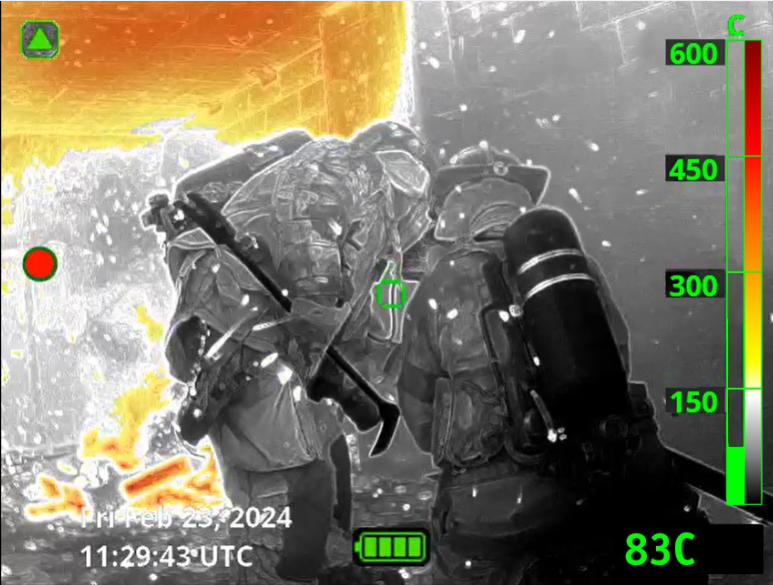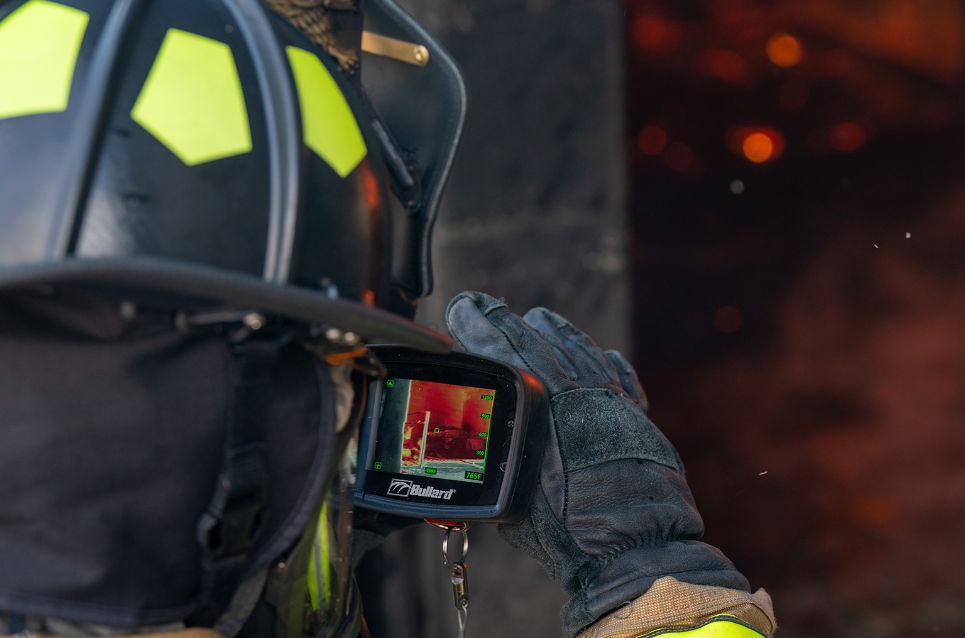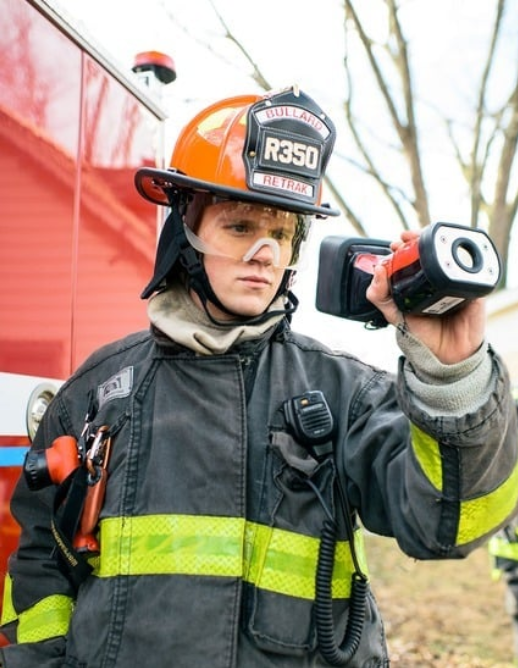Thermal imagers are essential tools for firefighters, offering enhanced visibility in hazardous environments. However, selecting the right deployment strategy and type of thermal imager requires balancing operational needs, budget constraints, and firefighter safety. This article synthesizes key insights into deployment strategies, the roles of situational and decision-making imagers, and practical recommendations to help departments make informed choices.
Understanding Thermal Imager Types: Situational vs. Decision-Making
Thermal imagers fall into two primary categories: situational and decision-making. Both serve essential yet distinct roles on the fireground:
Situational Imagers
- Purpose: Designed for basic awareness, such as navigating smoke-filled environments or locating other firefighters.
- Key Features:
- Resolution: Low (e.g., 160×120).
- Field of View: Narrower for short-range tasks.
- Colorization: Limited, often grayscale.
- Refresh Rate: Slower, sufficient for static scenarios.
- Advantages: Lightweight, basic, easy to operate, and affordable, allowing for wider distribution among personnel.
- Limitations: Unsuitable for complex tasks like size-ups or victim identification due to lower resolution and limited range.
Decision-Making Imagers
- Purpose: Advanced tools for tactical decision-making in high-stakes scenarios.
- Key Features:
- Resolution: Higher (e.g., 320×240 or 640×480 pixels) for detailed imaging.
- Colorization: Enhanced palettes highlight thermal details.
- Refresh Rate: Faster for real-time updates.
- Additional Capabilities: Precise temperature measurement and dynamic range handling.
- Advantages: Ideal for officers conducting size-ups, search and rescue, and structural assessments.
- Limitations: Higher cost and larger sizes may limit widespread deployment beyond the officer..

Deployment Strategies for Thermal Imagers
How thermal imagers are distributed within a department impacts their effectiveness during operations. Departments commonly use one of three strategies:
1. Full Riding Seat Deployment
- Approach: Equip every riding seat with a thermal imager.
- Benefits:
- Helps ensure all firefighters have immediate access to imaging tools.
- Reduces delays caused by sharing devices.
- Challenges: High upfront costs and potential trade-offs in imager quality to meet budget limitations.
- Best For: Departments prioritizing equal access to thermal imaging technology across all firefighters.
2. Tiered Deployment
- Approach: Allocate thermal imagers based on roles and priorities, such as:
- More basic decision-making thermal imager or situational imagers for all firefighters.
- Advanced decision-making imagers for officers or specialized teams.
- Benefits: Balances budget constraints while maintaining advanced imaging capabilities for critical decision-makers.
- Challenges: Requires detailed planning and training to avoid capability gaps.
- Best For: Departments with moderate budgets seeking a cost-effective, scalable solution.
3. First Arrival Deployment
- Approach: Place thermal imagers on first-arriving apparatus, such as engines or ladder trucks.
- Benefits: Helps ensure immediate access during the critical early minutes of an incident.
- Challenges: May leave later-arriving crews without imaging tools.
- Best For: Smaller departments or those with limited budgets.
Choosing the Right Strategy for Your Department
When selecting a deployment strategy or deciding between thermal imager types, consider:
- Budget Constraints: Align purchases with available funds while planning for future upgrades.
- Operational Needs: Identify scenarios where advanced capabilities are most critical.
- Call Volume and Incident Complexity: Higher call volumes and diverse incident types may justify broader deployment.
- Growth Potential: Opt for strategies that accommodate future expansion.
Conclusion
Thermal imagers are crucial for today’s firefighting, but their effectiveness depends on thoughtful deployment and type selection. A balanced deployment approach helps ensure broad access while prioritizing advanced capabilities for critical roles. By tailoring your deployment strategy to your department’s unique needs and resources, you can enhance safety, efficiency, and operational success.
Talk to the experts at Bullard to help you on your thermal imager strategy here.



